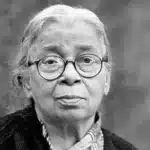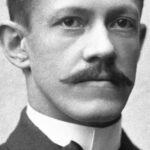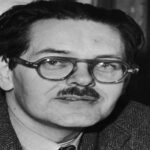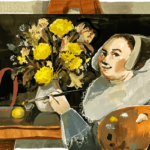Adolf Butenandt (24 March 1903 – 18 January 1995) was a German biochemist. In 1939, he received the Nobel Prize in Chemistry.
Life and Career
He was born on 24 March 1903 in Bremen, Germany. In 1927, he graduated from Göttingen University, where he studied under Adolf Windaus.
In 1927, he worked as a Scientific Assistant at the Göttingen Institute of Chemistry, and in 1931, he worked as a Privatdozent in Göttingen University’s Department of Biological Chemistry and head of the organic and inorganic chemistry labs. Then he became Professor Ordinarius at Danzig Institute of Technology, where he ran the Institute for Organic Chemistry until 1936.
He was a Professor of Biochemistry at the University of Berlin and Director of the Max Planck Institute for Biochemistry in Berlin-Dahlem from 1936 to 1960. He was a Professor of Physiological Chemistry at Tübingen from 1945 to 1956, then at Munich from 1956 to 1964. He was director of the Munich Institute of Physiological Chemistry from 1956 to 1960. From 1960 to 1972, he served as the president of the Max Planck Society for the Advancement of Science. He died on 18 January 1995 in Munich, Germany.
Major Works
In 1929, Butenandt isolated estrone, a hormone essential for female sexual development and function, almost simultaneously with Edward A. Doisy. He discovered androsterone in 1931, a male sex hormone, and progesterone in 1934, which plays an important role in female reproduction. Basically, steroids are sex hormones, and after Ruzicka demonstrated that cholesterol could be converted to androsterone, he and Butenandt figured out how to make progesterone as well as testosterone. As a result of Butenandt’s investigations, cortisone and other steroids were eventually synthesized and birth control pills were developed.
During the 1940s, Butenandt’s research on eye color defects in insects showed that specific genes control the synthesis of enzymes needed by various metabolic processes and that mutations in those genes can cause metabolic problems. He and his colleagues isolated the first known pheromone, Bombyx mori, after two decades of research. It’s a sex attractant found in the silkworm moth. He crystallized the insect hormone ecdysone too.
Award and Legacy
In 1939, he won the Nobel Prize in Chemistry for the identification of sex hormones, oestrogen, progesterone, and androsterone.












